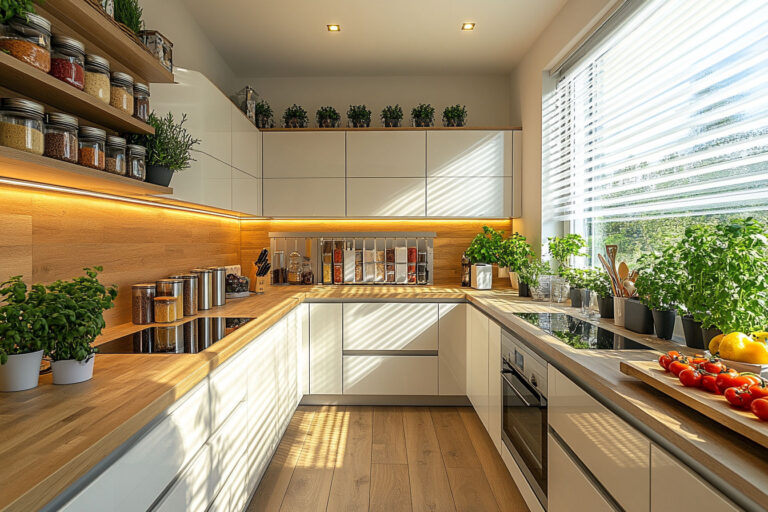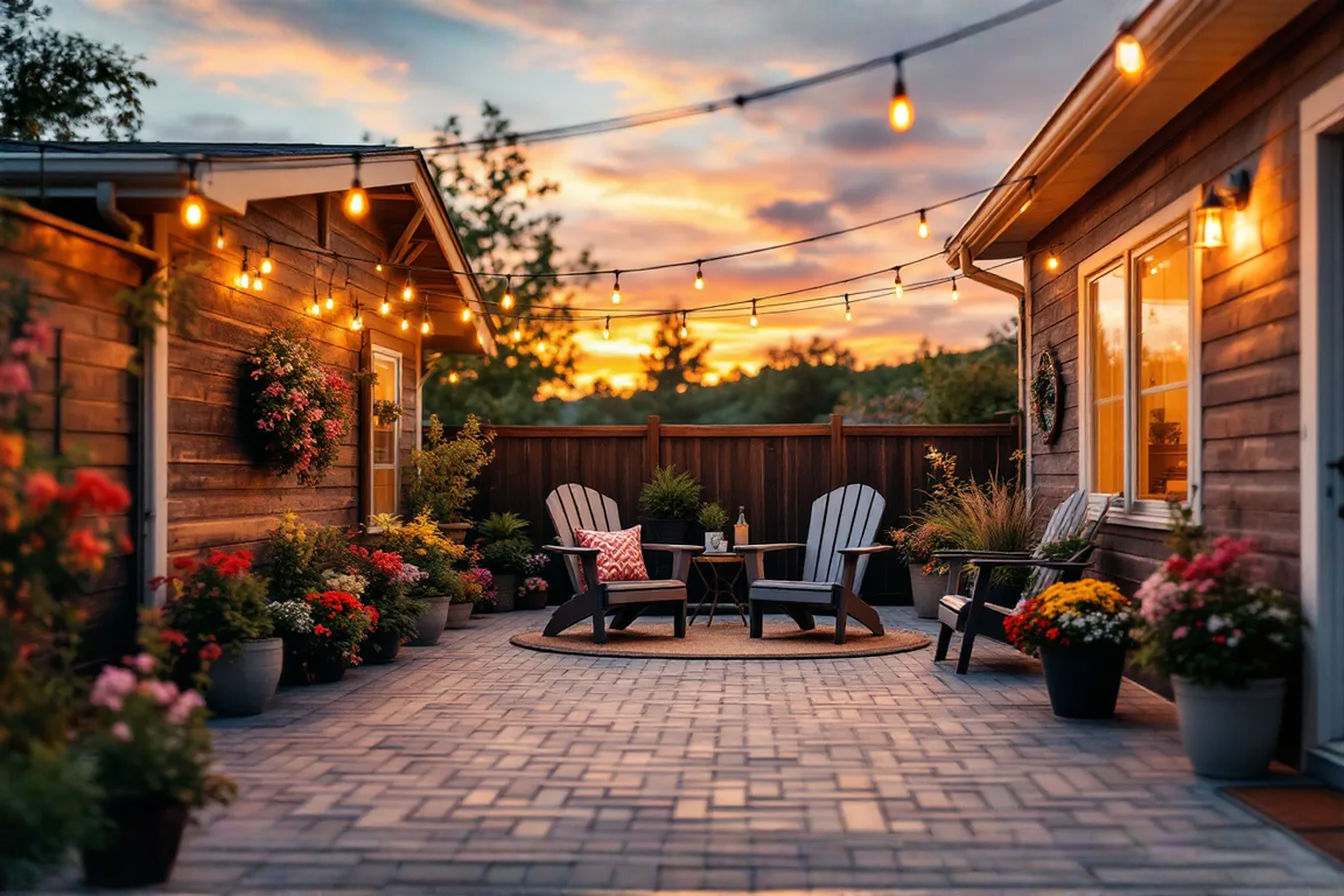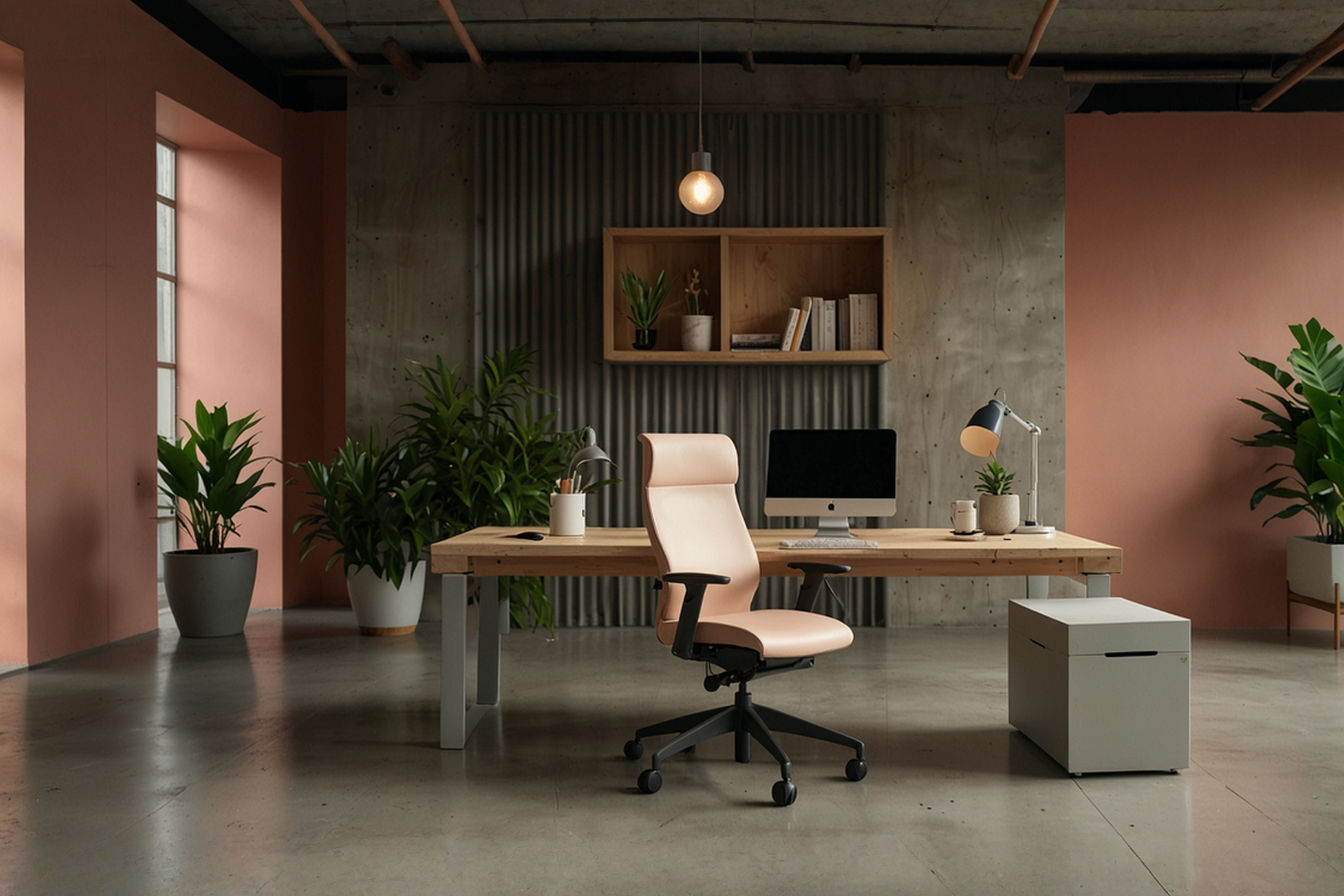This post may contain affiliate links. If you make a purchase through these links, we may earn a commission at no additional cost to you.
Music fills our souls, but musical instruments and equipment can quickly fill our homes. For apartment dwellers, urban residents, and anyone dealing with spatial constraints, this presents a unique challenge. How can you nurture your musical passion without letting it overwhelm your living space?
This comprehensive guide offers 17 innovative solutions designed specifically for music enthusiasts working with limited square footage. These ideas combine functionality with style, ensuring your creative pursuits don’t require sacrificing your living comfort or aesthetic preferences.
Whether you’re a guitarist with a growing collection, a pianist in a studio apartment, or a home recording enthusiast with dreams bigger than your floor plan, these smart strategies will help you harmonize your musical needs with your spatial reality.
The Challenges of Creating Music Spaces in Small Areas
Creating a dedicated area for music in compact living quarters presents several distinct challenges. Sound management tops the list, as neighbors and roommates might not share your enthusiasm for 2 AM practice sessions. Storage becomes a puzzle when every square inch counts, and finding room for bulky instruments requires creative thinking.
Acoustic considerations remain crucial even in limited areas. Small spaces can create unwanted sound reflections and resonance issues that affect both practice quality and recording clarity. Additionally, many musicians must balance their musical setup with everyday living functions, creating spaces that transition smoothly between creative and practical uses.
Furniture placement demands extra attention when musical activities enter the equation. Standard living room arrangements might not accommodate instrument storage or playing positions, requiring rethinking of traditional layouts. The challenge lies in creating a space that serves your musical needs without feeling like you’re living in a music store or recording studio.
Vertical Solutions: Maximizing Wall Space
1. Wall-Mounted Instrument Displays
Treating your instruments as decorative elements represents one of the smartest approaches to small space music storage. Wall-mounted guitar hangers, in particular, transform your collection into an impressive visual display while freeing up valuable floor space.
Various mounting systems suit different instruments and wall types. String instruments benefit from specialized hangers with protective features that cradle the headstock safely. Woodwinds and brass instruments require custom mounting solutions that support their unique shapes without causing damage to delicate mechanisms.
Installation demands careful attention to wall structure and weight distribution. Always locate wall studs or use appropriate anchors capable of supporting your instrument’s weight. Position your display at a height that allows easy access while protecting instruments from accidental bumps and environmental factors like direct sunlight or heating vents.
2. Floating Shelves for Equipment and Accessories
Strategic shelf placement creates accessible homes for frequently used musical items without consuming floor space. Amplifiers, effects pedals, and recording gear that previously cluttered surfaces can find new residences on walls, maintaining accessibility while enhancing room flow.
Weight considerations play a critical role in shelf selection and installation. Music equipment tends to be heavier than typical shelf contents, so choose brackets and mounting hardware rated for sufficient weight capacity. Stagger shelf heights to accommodate items of various sizes while creating visual interest.
These floating storage solutions offer aesthetic benefits beyond mere functionality. Arrange your equipment with an eye toward visual composition, integrating your musical tools into your overall decor scheme. Careful grouping by type, size, or color creates an organized appearance that elevates your space rather than cluttering it.
3. Ceiling-Suspended Storage Options
The space above your head represents an often-overlooked storage frontier perfect for seldom-used instruments and equipment. Pulley systems enable easy raising and lowering of items like keyboard stands, guitar cases, or recording accessories, keeping them accessible but out of the way.
Overhead racks mounted directly to ceiling joists provide secure storage for lighter items like acoustic guitar cases or microphone stands. This approach works particularly well in spaces with higher ceilings or loft arrangements where vertical clearance accommodates suspended items without creating hazards.
Safety must remain paramount when implementing overhead storage. Ensure all mounting hardware connects directly to structural supports, never relying solely on drywall or ceiling panels. Create clear access paths for lowering items safely, and avoid suspending extremely heavy equipment that could present dangers if mounting fails.
Multi-Functional Furniture Solutions
4. Convertible Music Workstations
Furniture that transforms between everyday and musical functions offers incredible space efficiency. Secretary-style desks with fold-down work surfaces make perfect keyboard stations or mixing areas, concealing equipment when closed and presenting a polished appearance in living areas.
Key features to seek in convertible workstations include adjustable height options, cable management systems, and sufficient weight capacity for equipment. Sliding trays allow keyboards and controllers to glide away when not needed, while integrated storage compartments keep accessories organized and protected.
These versatile pieces eliminate the need for dedicated music furniture, allowing a single item to serve multiple roles throughout your day. This multi-functionality proves especially valuable in studio apartments or shared living situations where distinct activity zones must coexist within limited square footage.
5. Storage Ottomans for Music Equipment
Small accessories like cables, headphones, tuners, and picks often create the most persistent clutter in musical spaces. Storage ottomans cleverly address this issue by providing hidden compartments within seating elements you already need in your living area.
Dual-purpose seating with storage capacity creates practical homes for items that would otherwise scatter across surfaces. Models with divided interior compartments help organize different categories of accessories, preventing the “junk drawer” effect that complicates finding specific items quickly.
Material selection affects both appearance and acoustic properties. Upholstered options with padded tops contribute to room acoustics by absorbing sound reflections, particularly in spaces with hard flooring. Choose durable fabrics resistant to wear, as these pieces typically see frequent use in both capacities.
6. Murphy-Style Fold-Down Practice Spaces
Wall-mounted workstations that fold away when not in use represent the ultimate space-saving solution for dedicated practice areas. These installations provide stable surfaces for keyboards, mixing equipment, or composition work, then disappear completely when daily living requires the floor space.
Installation requirements include secure anchoring to wall studs and careful planning for clearance in both open and closed positions. Most systems require at least 30 inches of clearance when deployed, making corner placements ideal in many room layouts to minimize disruption to traffic flow.
Customization options abound for these versatile units. Integrated cable channels prevent wire tangles during folding operations, while built-in LED lighting transforms basic workstations into professional-grade production areas. Some systems incorporate monitor mounting points, shelving for reference materials, or specialized holders for frequently used tools.
7. Under-Stair Music Nooks
Homes with staircases contain perfectly shaped potential music spaces hiding in plain sight. The triangular area beneath stairs typically goes unused or becomes awkward storage, yet its dimensions suit many musical applications remarkably well.
Design considerations for these unconventional spaces include maximizing headroom through careful planning of seating position and equipment placement. The natural progression from low to high clearance accommodates various activities, with storage in lowest areas and performance space where full height allows.
Successful under-stair conversions often feature built-in storage components designed precisely for the angled space. Custom shelving that follows the stair line creates homes for equipment of graduated heights, while pull-out drawers utilize the deepest sections for larger items. Proper lighting transforms these potentially dark nooks into inviting creative zones.
Compact Instrument Options
8. Travel-Sized Instruments That Don’t Sacrifice Quality
Manufacturers increasingly recognize the need for professional-grade instruments in compact forms. Modern travel guitars, for instance, offer remarkably authentic playing experiences and quality construction despite their reduced footprints, making them viable primary instruments rather than mere compromises.
Comparisons to full-sized counterparts reveal surprising parity in performance capabilities. Technological advances in materials and construction techniques allow small-bodied acoustic instruments to produce rich, full sounds previously impossible in compact dimensions. Similarly, reduced-scale keyboards now offer weighted action and velocity sensitivity comparable to their full-sized cousins.
Choosing compact over standard sizing makes sense when space constraints would otherwise prevent playing entirely. These instruments enable practice in environments like micro-apartments or travel settings where traditional instruments simply wouldn’t fit. Many musicians find these smaller options sufficiently satisfying that they become preferred instruments regardless of space considerations.
9. Digital Alternatives to Traditional Instruments
Digital technology offers perhaps the most dramatic space-saving potential in the musical world. Electronic drum kits with mesh heads provide authentic playing experiences while occupying fractions of the space required by acoustic sets, with the added advantage of volume control through headphones.
Sound quality considerations have evolved dramatically in recent years, with sampling technology and modeling algorithms creating increasingly convincing reproductions of acoustic instruments. High-end digital pianos now capture subtle nuances of hammer action and string resonance that satisfy even discerning players.
Multi-instrument digital options like MIDI controllers connected to software instruments represent the ultimate space efficiency. A single keyboard controller with appropriate software can replace an entire room of instruments, producing everything from grand pianos to vintage synthesizers to orchestral strings within the same compact footprint.
10. Foldable and Collapsible Instrument Stands
Stable support for instruments requires substantial floor space when using traditional stands, but modern collapsible options address this challenge brilliantly. Innovative designs now fold flat for storage while deploying quickly when needed for practice or performance.
Quick-setup options particularly benefit musicians in multi-use spaces. Guitar stands that fold to pocket size, keyboard stands that collapse to the dimensions of a laptop, and microphone stands that telescope down to minimal proportions all contribute to flexible space usage without compromising stability during use.
Durability remains essential despite the emphasis on portability. Look for models with reinforced joints, quality locking mechanisms, and materials selected for both lightweight properties and structural integrity. Premium options often incorporate features like adjustable angles, cable management systems, and protective padding to prevent instrument damage.
Acoustic Treatments for Small Spaces
11. Dual-Purpose Acoustic Panels as Art
Acoustic treatment need not create institutional vibes in your living space. Modern acoustic panels double as decorative elements through custom printing capabilities that transform sound-absorbing materials into personalized artwork, photography displays, or abstract design elements.
Strategic placement maximizes both acoustic effectiveness and visual impact. Position panels at primary reflection points—particularly at ear level on side walls and on ceilings above performance areas—to address sound issues while creating focal points in your decor scheme. Consider arrangements that create gallery-like displays rather than isolated functional elements.
DIY options range from simple to sophisticated for the budget-conscious musician. Basic approaches involve wrapping fiberglass insulation panels in decorative fabrics, while more advanced projects incorporate printed images onto acoustic fabric stretched over absorption materials. Commercial solutions offer professional aesthetics and certified acoustic performance for those seeking turnkey installations.
12. Portable Isolation Solutions
Complete soundproofing rarely proves practical in small living spaces, but portable isolation tools offer targeted solutions for specific recording needs. Collapsible vocal booths create controlled environments for capturing clean vocals without permanent construction, setting up quickly when needed and storing compactly between sessions.
Instrument isolation options include miniature “sound tents” designed for microphone placement when recording amplifiers or acoustic instruments. These portable enclosures absorb sound while containing the microphone and sound source, dramatically reducing room reflections and environmental noise without dedicated recording spaces.
Budget-friendly alternatives emerge from repurposed household items. Closets lined with moving blankets make serviceable vocal booths, while storage containers lined with acoustic foam create miniature isolation chambers for recording small sound sources. These approaches sacrifice some acoustic perfection but offer considerable improvement over untreated rooms.
13. Soundproofing Techniques That Don’t Require Construction
Renters and those unable to modify their spaces permanently still have options for improving sound containment. Heavy curtains covering walls and windows absorb significant sound energy while adding textural interest to rooms, doubling as both acoustic treatment and decor enhancement.
Effective methods that preserve space include strategic furniture placement to break up sound reflections. Bookshelves filled with varying sizes of books create irregular surfaces that diffuse sound waves, while upholstered furniture absorbs energy that would otherwise bounce around the room. These everyday items serve acoustic purposes without additional space requirements.
Cost comparisons reveal weatherstripping as a remarkably effective investment for sound isolation. Applying quality seals around doors and windows blocks surprising amounts of sound transmission at minimal expense and without structural changes. Similarly, door sweeps and draft blockers reduce sound leakage under doors, addressing a common weak point in room isolation.
Tech Solutions for Space-Conscious Musicians
14. All-in-One Recording Setups
Modern recording technology increasingly consolidates multiple functions into single devices, dramatically reducing the equipment footprint required for quality production. Audio interfaces now routinely combine preamps, converters, monitoring controls, and even onboard effects processing within compact housings smaller than traditional paperback books.
Space-saving equipment options extend to microphones with built-in USB connectivity that eliminate the need for separate interfaces altogether. Similarly, monitoring controllers integrate headphone amplification, speaker management, and input selection within desk-friendly dimensions, replacing multiple separate components.
Software solutions increasingly handle processing previously requiring hardware. Virtual amplifier modeling, for instance, reproduces the sounds of extensive guitar rig setups within your computer, eliminating the need for physical amplifiers, speaker cabinets, and pedal collections. These digital approaches maintain professional capabilities while radically reducing spatial requirements.
15. Wireless Systems to Reduce Cable Clutter
Cables create both visual clutter and practical hazards in tight quarters. Wireless instrument systems free musicians from physical connections to amplifiers and recording equipment, eliminating cable runs that would otherwise cross living spaces and create tripping hazards or cleaning obstacles.
Options exist for virtually every instrument type, from guitar systems with remarkable fidelity to wireless microphones that match wired performance. Modern digital transmission technologies have eliminated the reliability issues that plagued earlier wireless generations, making these solutions practical for even critical recording applications.
Reliability considerations remain important when selecting wireless equipment for small spaces. Digital systems operating in the 2.4GHz band may experience interference in apartments with numerous WiFi networks, while systems using specific radio frequencies require checking local bandwidth availability. Research frequency options appropriate to your location before investing in specific systems.
16. Headphone Setups for Silent Practice
Perhaps no technology better serves the space-conscious musician than quality headphones and the associated monitoring systems that enable silent practice. Professional-grade closed-back headphones provide accurate sound reproduction while preventing sound leakage that would disturb others, enabling practice at any hour.
Amplifier solutions designed specifically for headphone monitoring offer professional features in desktop-friendly packages. These specialized devices provide the impedance matching and output power needed for optimal headphone performance, along with features like onboard effects processing for realistic playing experiences despite the silent external output.
Multi-person silent jam sessions become possible through headphone distribution amplifiers that allow several musicians to monitor the same source simultaneously. These compact hubs enable collaborative playing in settings where acoustic instruments or speaker monitoring would prove impractical, maintaining creative connections without spatial or volume limitations.
17. Smart Storage Solutions for Digital Music Libraries
Physical media collections once demanded extensive storage space, but digital libraries eliminate this requirement entirely. Tablet-based sheet music systems replace bookshelves full of scores with searchable, annotatable collections accessible through devices you already own and carry.
Hardware options for compact music libraries include external solid-state drives smaller than playing cards that store thousands of high-resolution audio files or complex recording projects. These portable solutions enable maintaining extensive archives without dedicated storage furniture, fitting easily in desk drawers or equipment bags.
Cloud-based alternatives eliminate even these minimal physical storage needs. Subscription services provide access to virtually unlimited sheet music collections, reference recordings, and educational materials without any local storage requirements beyond the devices used to access them. These approaches prove particularly valuable for musicians who move frequently or lack permanent practice spaces.
Organization and Maintenance Tips
Establishing consistent routines for equipment storage transforms musical spaces from chaotic to functional. Designate specific homes for each item, using labeling systems for storage containers and implementing a “return after use” policy that prevents gradual clutter accumulation. This disciplined approach keeps creative spaces ready for spontaneous inspiration.
Protecting instruments in multi-use spaces requires thoughtful planning. Position instruments away from heating vents, direct sunlight, and high-traffic areas where accidental damage might occur. Consider humidity control solutions like instrument case humidifiers in dry environments or dehumidifiers in damp conditions to protect valuable wooden instruments.
Keeping cables and accessories organized represents a particular challenge for musicians. Cable wraps that prevent tangling, color-coded systems that identify specific connections at a glance, and modular storage components that adapt to changing equipment collections all contribute to sustainable organization. Drawer dividers and small containers within larger storage units prevent the “cable salad” that inevitably develops in unorganized spaces.
Seasonal rotation strategies work well for musicians with equipment needs that change throughout the year. Store less-used items in under-bed containers or high cabinet spaces, establishing a calendar-based rotation system that brings needed equipment into accessible positions when appropriate while keeping rarely-used items from consuming prime storage real estate year-round.
Real-World Examples: Small Space Music Setups That Work
A Manhattan studio apartment demonstrates how vertical thinking transforms limited square footage into a functional recording environment. Wall-mounted guitar hangers display a collection of six instruments as room decor, while a murphy-bed installation incorporates a fold-down desk that serves as both mixing station and home office. Carefully positioned acoustic panels double as decorative elements, creating a space that transitions seamlessly between professional and personal functions.
Before and after transformations reveal the power of intentional design. One particularly striking example shows a spare bedroom converted from cluttered equipment storage to streamlined practice space through wall mounting previously floor-standing equipment, implementing a digital piano rather than an acoustic upright, and incorporating built-in storage specifically dimensioned for recording components. The result provides greater functionality within the same square footage.
Budget examples prove these approaches remain accessible without significant investment. A college dormitory setup uses bed risers to create under-bed storage for equipment cases, tension rods with curtains for basic acoustic separation, and a collapsible keyboard stand that stores flat against the wall when not in use. These simple solutions require minimal expense while dramatically improving the space’s musical functionality.
Mid-range implementations often incorporate custom furniture elements designed specifically for musical needs. One apartment dweller commissioned a carpenter to create a window seat with instrument storage below and pull-out surfaces for keyboard placement, integrating musical functionality within an architectural feature that enhances the overall room design while maximizing natural light.
High-end examples demonstrate how integrated technology creates nearly invisible musical environments. One particularly impressive condominium installation features motorized panels that reveal instruments and equipment when activated but present as ordinary walls when closed. Built-in audio systems with in-ceiling speakers eliminate visible components entirely, while automated lighting scenes transition the space from living room to performance area at the touch of a button.
Conclusion
Creating functional musical environments within limited square footage demands creativity, but these 17 solutions prove that space constraints need not limit your musical pursuits. By approaching your space with intentionality and leveraging innovative products and techniques, you can create an environment that nurtures your creativity without overwhelming your living situation.
Prioritizing musical passion despite spatial limitations yields rewards beyond mere convenience. Thoughtfully designed music spaces encourage more frequent practice, increase creative productivity, and enhance enjoyment of your instruments. The effort invested in optimizing your space pays dividends in your musical development and satisfaction.
Remember that perfect solutions vary widely between individuals based on specific instruments, playing styles, and living situations. Experiment with combining different approaches from this guide to create a personalized environment that supports your unique musical journey. With strategic thinking and selective implementation of these ideas, you’ll discover that musical fulfillment requires far less space than you might have imagined.
Additional Resources
Several manufacturers specialize in furniture designed specifically for musicians in small spaces. Brands like String Swing offer comprehensive wall-mounting solutions for various instruments, while companies such as Studio Desk produce convertible workstations that maximize functionality within minimal footprints. For portable practice solutions, companies like Roland lead in developing compact yet professional-grade instruments and recording equipment.
Online communities provide invaluable support for musicians navigating space constraints. Forums like the Apartment Guitarist group on social media platforms share creative solutions specific to urban living situations, while video channels dedicated to small studio design offer visual demonstrations of successful implementations across various budget levels.
Further inspiration sources include architectural and interior design publications increasingly featuring musician-friendly small spaces. Design books focusing on multipurpose rooms and flexible living environments often include musical applications among their case studies. These resources provide both practical ideas and aesthetic inspiration for creating spaces that serve your musical needs while enhancing your overall living environment.






